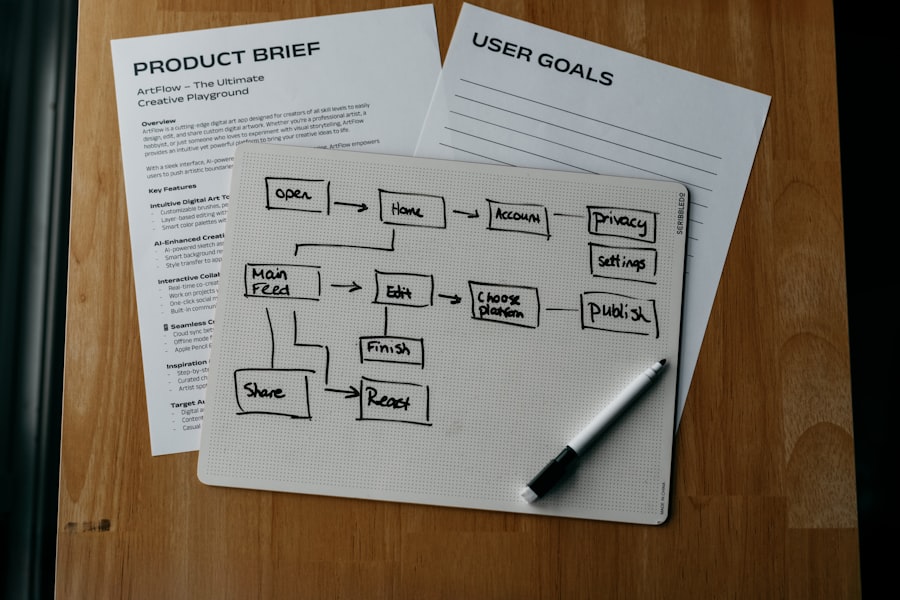As I delve into the world of technology, I find myself increasingly fascinated by the concept of Progressive Web Apps, or PWAs. These innovative applications blend the best features of web and mobile apps, creating a seamless user experience that is both engaging and efficient. PWAs are designed to work on any device with a web browser, which means they can reach a broader audience without the need for separate development for different platforms.
This universality is one of the key aspects that sets PWAs apart from traditional applications. What truly captivates me about PWAs is their ability to function offline and provide a native-like experience. By leveraging modern web capabilities, PWAs can cache content and data, allowing users to access them even without an internet connection.
This feature is particularly beneficial in areas with unreliable connectivity or for users who may not always have access to data. The combination of offline functionality, fast loading times, and responsive design makes PWAs an attractive option for businesses looking to enhance their digital presence.
Key Takeaways
- PWAs are web applications that provide a native app-like experience, combining the best of web and mobile apps.
- Implementing a PWA strategy can lead to increased user engagement, improved performance, and higher conversion rates.
- Key components of a successful PWA strategy include fast loading times, offline functionality, push notifications, and responsive design.
- Designing a user-centric PWA experience involves focusing on intuitive navigation, seamless interactions, and personalized content.
- Implementing PWA best practices such as optimizing for performance, ensuring security, and leveraging service workers is crucial for success.
The Benefits of Implementing a PWA Strategy
When I consider the advantages of adopting a PWA strategy, I am struck by the potential for increased user engagement and retention. PWAs can significantly improve load times, which is crucial in today’s fast-paced digital landscape. Research has shown that users are more likely to abandon a site if it takes longer than three seconds to load.
By implementing a PWA, businesses can ensure that their applications load quickly, keeping users engaged and reducing bounce rates. Moreover, the cost-effectiveness of PWAs cannot be overlooked. Developing a single PWA that works across multiple platforms can save businesses both time and resources compared to creating separate native applications for iOS and Android.
This streamlined approach allows companies to allocate their budgets more efficiently while still delivering a high-quality user experience. Additionally, PWAs can be easily updated without requiring users to download new versions, ensuring that everyone has access to the latest features and improvements.
Key Components of a Successful PWA Strategy

In my exploration of successful PWA strategies, I have identified several key components that are essential for achieving desired outcomes. First and foremost, a robust service worker is crucial. This script runs in the background and manages caching, enabling offline functionality and faster load times.
By implementing an effective service worker, I can ensure that users have a smooth experience regardless of their internet connection. Another vital component is the use of responsive design principles. A PWA must adapt seamlessly to various screen sizes and orientations, providing an optimal experience on smartphones, tablets, and desktops alike.
This adaptability not only enhances user satisfaction but also contributes to better search engine rankings, as search engines prioritize mobile-friendly sites. By focusing on responsive design, I can create a PWA that meets the diverse needs of users across different devices.
Designing a User-Centric PWA Experience
As I embark on the journey of designing a user-centric PWA experience, I recognize the importance of understanding my target audience. Conducting thorough user research allows me to identify their preferences, pain points, and behaviors. By gathering insights into how users interact with similar applications, I can tailor my PWA to meet their specific needs and expectations.
In addition to understanding my audience, I must prioritize intuitive navigation and accessibility in my design process. A well-structured layout with clear calls-to-action will guide users effortlessly through the application. Furthermore, ensuring that my PWA is accessible to individuals with disabilities is not just a legal requirement; it’s also an ethical responsibility.
By incorporating accessibility features such as screen reader compatibility and keyboard navigation, I can create an inclusive experience that caters to all users.
Implementing PWA Best Practices
In my quest to implement best practices for PWAs, I have come across several strategies that can significantly enhance performance and user satisfaction. One of the most effective practices is optimizing images and other media files for faster loading times. By compressing images without sacrificing quality and using modern formats like WebP, I can ensure that my PWA loads quickly while still delivering visually appealing content.
Another best practice involves leveraging push notifications to re-engage users. By sending timely and relevant notifications, I can keep users informed about updates, promotions, or new content. However, it’s essential to strike a balance; overly frequent or irrelevant notifications can lead to user frustration and opt-outs.
By carefully curating my messaging and respecting user preferences, I can utilize push notifications as a powerful tool for enhancing engagement.
Measuring Success and Iterating on Your PWA Strategy

To gauge the success of my PWA strategy, I must establish clear metrics and KPIs that align with my business goals. Metrics such as user engagement rates, conversion rates, and retention rates provide valuable insights into how well my PWA is performing. By analyzing this data regularly, I can identify areas for improvement and make informed decisions about future updates or enhancements.
Iteration is a crucial aspect of any successful strategy. As I gather feedback from users and monitor performance metrics, I must be willing to adapt my approach based on real-world insights. This iterative process allows me to refine my PWA continually, ensuring that it remains relevant and effective in meeting user needs.
By embracing a mindset of continuous improvement, I can create a dynamic application that evolves alongside changing user expectations.
Overcoming Challenges in PWA Implementation
While the benefits of PWAs are compelling, I am aware that challenges may arise during implementation. One common hurdle is ensuring compatibility across various browsers and devices. Although most modern browsers support PWA features, there may still be discrepancies in how they function.
To mitigate this issue, I must conduct thorough testing across different platforms to identify any inconsistencies and address them proactively. Another challenge lies in user adoption. Some users may be hesitant to add a PWA to their home screen or may not fully understand its capabilities compared to traditional apps.
To overcome this barrier, I need to educate users about the advantages of using my PWA through clear messaging and tutorials. By highlighting features such as offline access and push notifications, I can encourage users to embrace this innovative technology.
Future Trends and Considerations for PWA Strategies
As I look ahead to the future of PWAs, I am excited about the potential trends that may shape their evolution. One significant trend is the increasing integration of artificial intelligence (AI) into PWAs. AI can enhance personalization by analyzing user behavior and preferences, allowing me to deliver tailored content and recommendations.
This level of customization can significantly improve user engagement and satisfaction. Additionally, as 5G technology becomes more widespread, the capabilities of PWAs will expand even further. With faster internet speeds and lower latency, users will expect instantaneous experiences from web applications.
To stay ahead of the curve, I must continuously innovate and optimize my PWA strategy to leverage these advancements in technology. In conclusion, my journey into the realm of Progressive Web Apps has revealed their immense potential for transforming digital experiences. By understanding their core principles, implementing effective strategies, and remaining adaptable in the face of challenges, I can create a PWA that not only meets but exceeds user expectations.
As technology continues to evolve, I am committed to staying informed about emerging trends and best practices to ensure that my PWA remains relevant in an ever-changing landscape.
